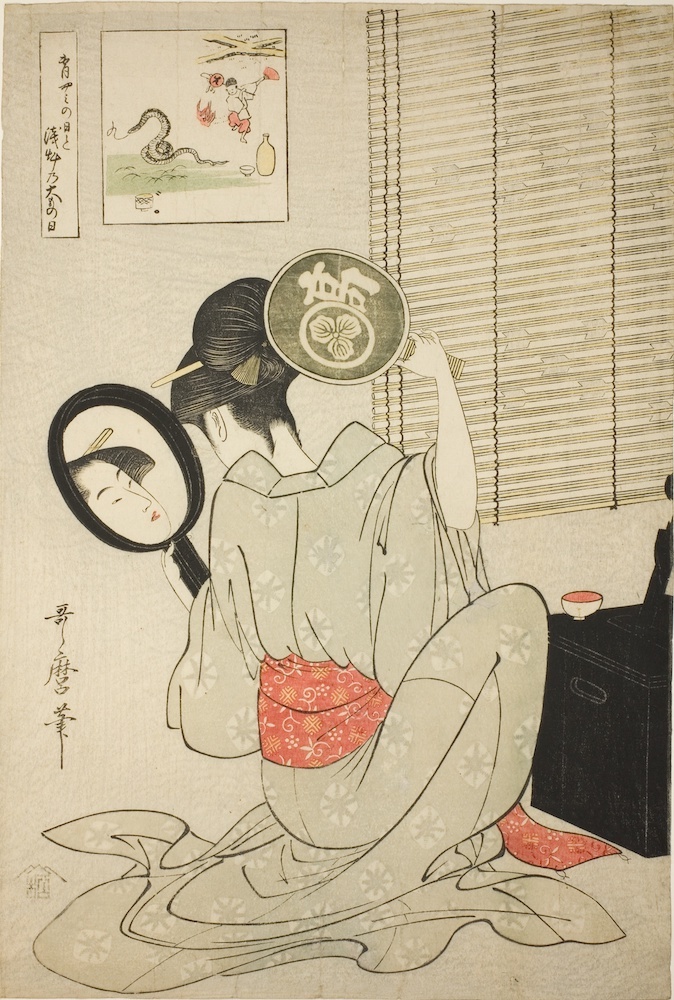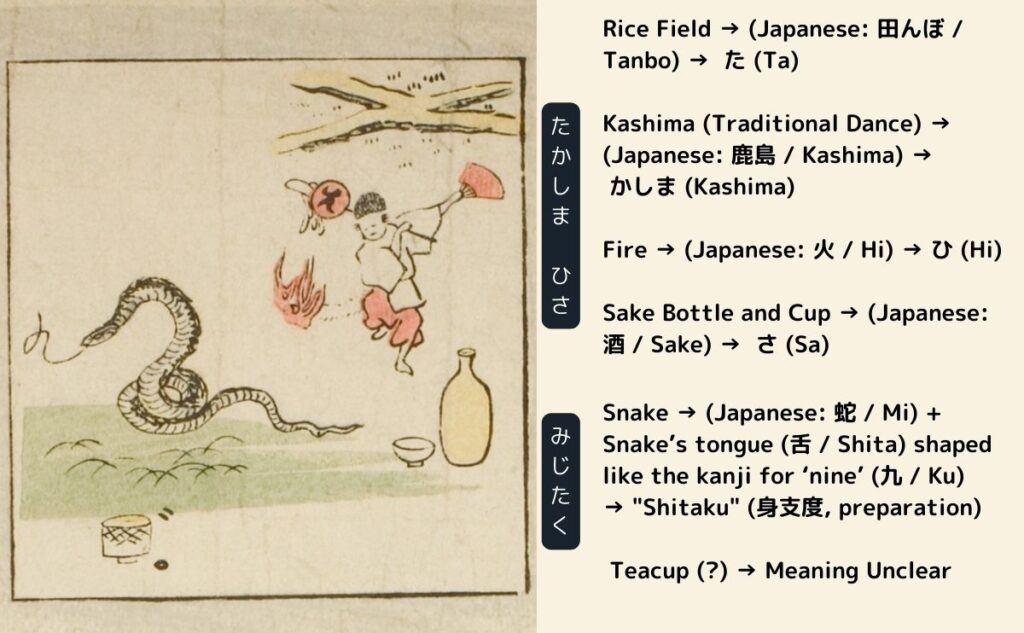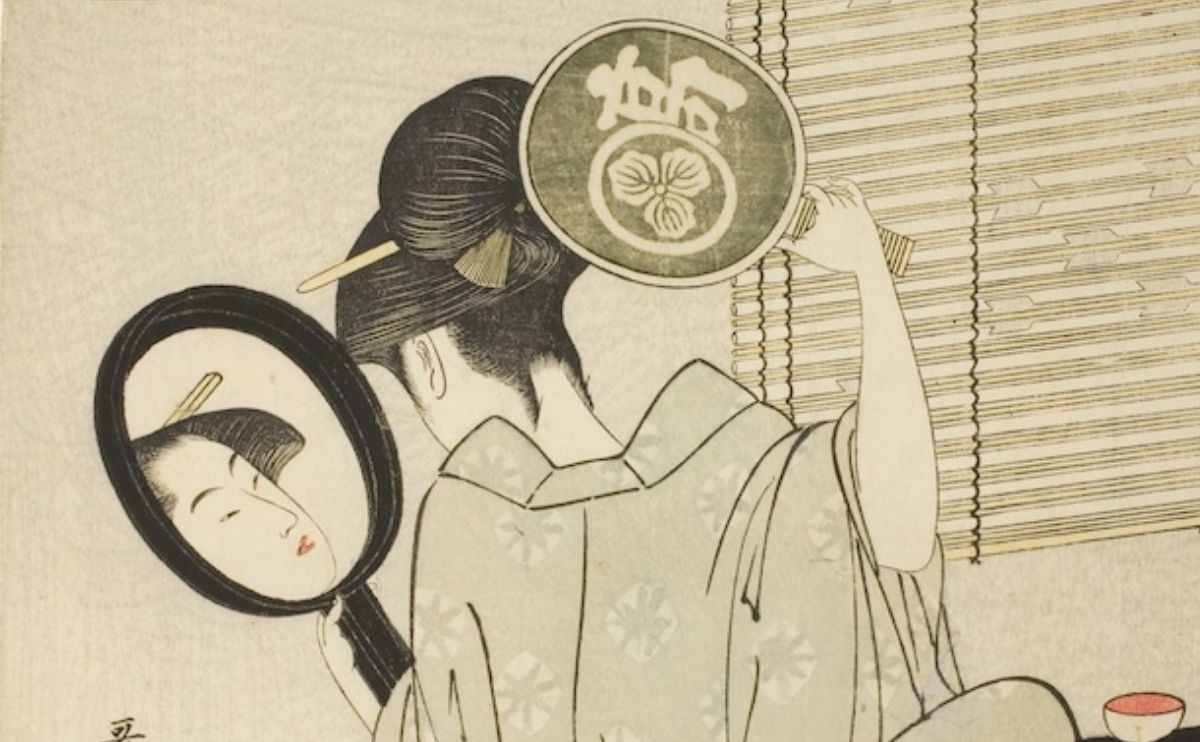🍵 The Ingenious Code Hidden in Utamaro’s Print!

Meet Takashima Hisa (高島ひさ)—the star café waitress of Edo, working at a tea house run by a rice cracker shop. Her beauty was so renowned that she became a favorite subject of ukiyo-e artists.
But here’s where things get even more fascinating…
During the strict reforms of the Edo period, the shogunate banned the use of real names in prints. To outsmart the censorship, Utamaro hid Hisa’s name in a clever rebus (picture puzzle) within the background.
🔍 Can you decode the secret message?

・Rice Field (田んぼ / Tanbo) → Ta (た)
・Kashima Dance (鹿島 / Kashima) → Kashima (かしま)
・Fire (火 / Hi) → Hi (ひ)
・Sake Bottle & Cup (酒 / Sake) → Sa (さ)
・Snake (蛇 / Mi) + Tongue shaped like ‘九’ (九 / Ku) → Shitaku (身支度, meaning “getting dressed”)
・Moor (野 / No) → No (の)
・Teacup (?) → Meaning Unclear
Put them together, and you get:
“Takashima Hisa getting dressed ” ✨
A hidden name, a visual riddle, and a stroke of artistic genius. Edo-era censorship only fueled more creativity!
What do you think of this brilliant workaround?
Takashima Hisa (高島ひさ)
High-Ranking Beauties Rebus Collection: “Takashima Ohisa” with a Paired Mirror
Artist: Kitagawa Utamaro I (喜多川歌麿, Japanese, early 1750s–1806)
Publisher: Matsumura Tatsuemon (松村辰右衛門, Japanese)
Period: Edo period (江戸時代), about 1795 (Kansei 7 / 寛政7年)
Medium: Woodblock print (nishiki-e), ink and color on paper
Dimensions: Vertical ōban (大判), 36.3 × 25 cm (14 5/16 × 9 13/16 in.)
